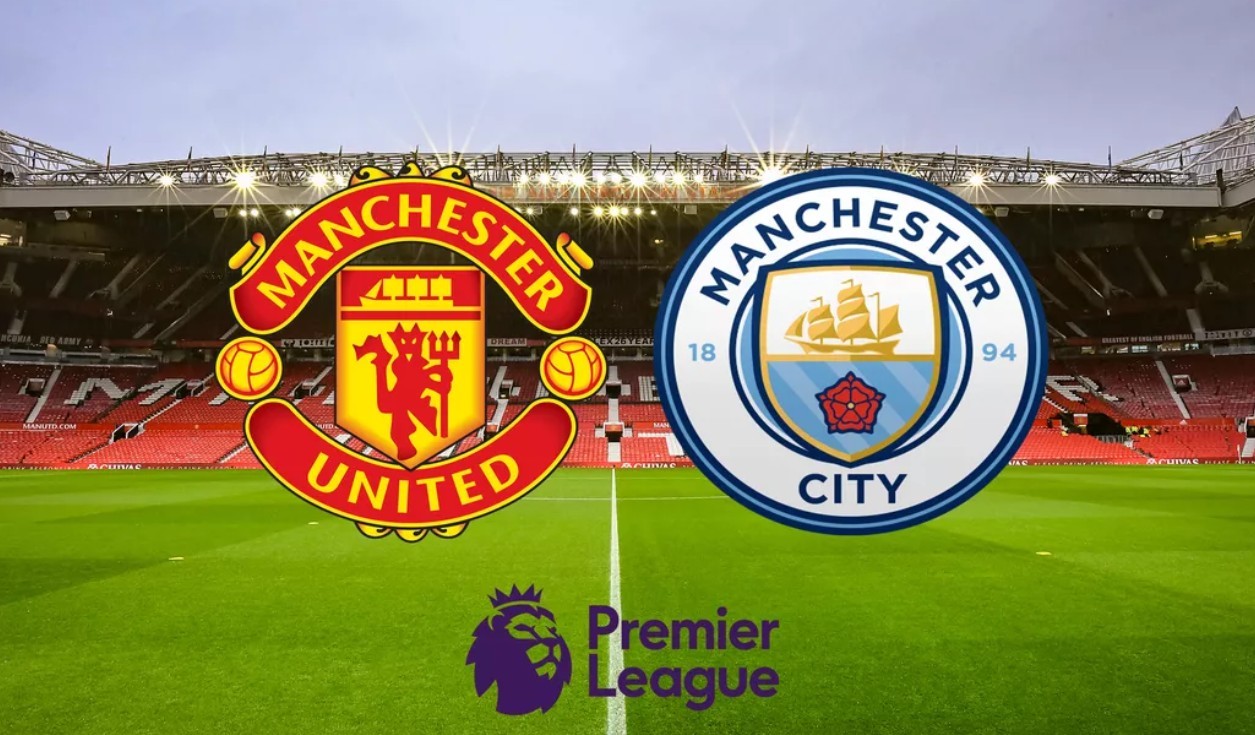Top 10 Richest and Poorest Cities in the World by GDP (2024 Update)
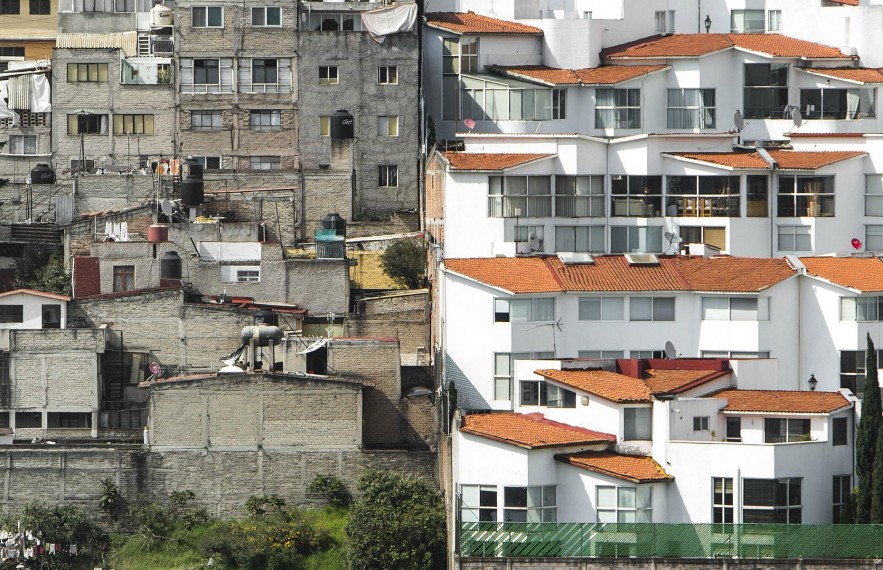 |
| Top 10 Richest and Poorest Cities in the World |
It's a big world, filled with cities that flaunt their wealth and others that struggle to survive in poverty. As we move forward in the year 2023, it will be crucial to comprehend the existing economic inequalities. This piece compares and contrasts the world's ten wealthiest cities by GDP with their less prosperous counterparts. Let's set out on this educational adventure together.
While cities like Tokyo and New York dominate in terms of GDP, it is interesting to note that there are countries where one can experience a rich culture and lifestyle without the associated high living costs, as highlighted in our list of the cheapest countries to live in.
| Gross domestic product (GDP) measures the monetary value of all final goods and services created within a city limits during a given time period. It gives a general picture of a city's economy and quality of life. Economic growth, improved infrastructure, and new commercial and creative possibilities are all possible outcomes of urbanization. Overpopulation, resource strain, and heightened inequity are all possible outcomes under poor management. |
Top 10 Richest Cities in the World by GDP 2023/2024
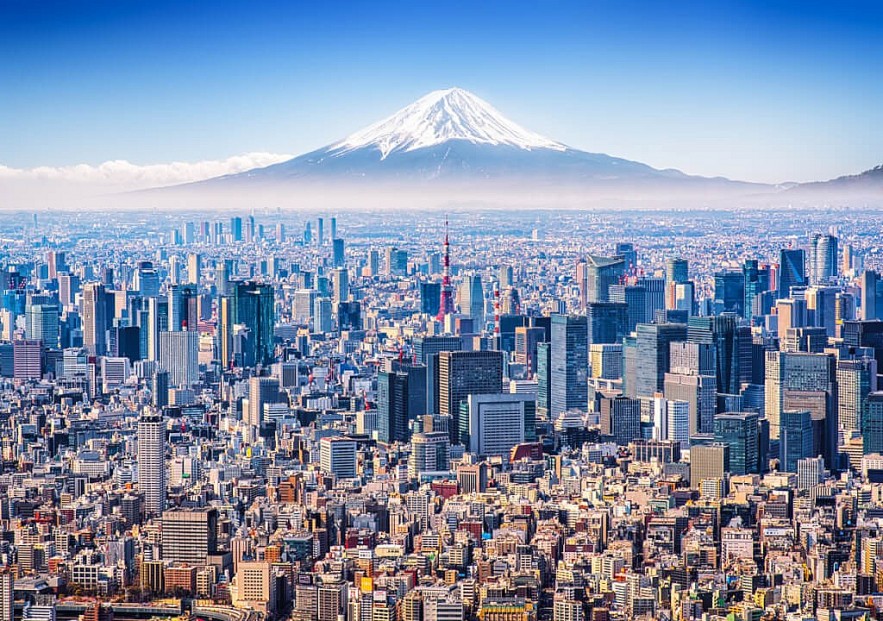 |
| Richest Cities in the World |
A new ranking of the richest cities in the world for 2023 placed Tokyo at the top, followed by the New York metropolitan area and Greater Los Angeles. Tokyo has a $2.05 trillion GDP per person.
Paris, Seoul, Chicago, Shanghai, and Singapore are just a few of the 300 cities that have a significant influence on how the world economy is portrayed, especially when it comes to technology and finance.
It's intriguing to think about the elements that contribute to a city's prosperity. Is it just the population, or do innovation and culture also play a part? The Gross Domestic Product (GDP), which takes into account the value of all goods and services offered in the region, is typically used to determine a city's wealth.
These cities are hubs for commerce, trade, and intricate networks where the fusion of innovation, technology, and culture results in enormous economies. Here are the top 300 wealthiest cities in the world according to GDP rankings.
Check more: Top 20 Richest Countries In the World 2023 - By GNI Per Capita
1. Tokyo, Japan
GDP: $1,520 billion
Area: 2,187.6 square kilometers
Population: 13,185,502
In 2023, Tokyo, the vibrant capital of Japan, will hold the title of richest city in the world. Tokyo has a staggering population of 13.1 to 13.7 million and has the biggest urban economy on the planet. Tokyo, the industrial, cultural, and scientific center of Japan, is home to some of the most well-known corporations in the world. It is acknowledged as one of the top financial centers in the world, alongside New York and London.
According to the proverbial saying, great things can come from humble beginnings. The same is true for Tokyo, Japan. When Tokugawa Ieyasu took the throne as Shogun and chose Edo as his capital, the city's history began as a small fishing village. From there, it developed into the nation's political capital. Tokyo was formerly known as Edo. The city has a troubled history. An earthquake in 1923 nearly leveled the city, which also took heavy bombing runs during World War II. Tokyo began to rebuild after Japan's capitulation in 1945 and developed into the modern world's most progressive city. The three largest industries in Tokyo are publishing, telecommunications, and electronics.
Key Facts:
Tokyo is the world’s largest urban economy.
It’s home to globally recognized companies and is a major financial center.
2. New York, USA
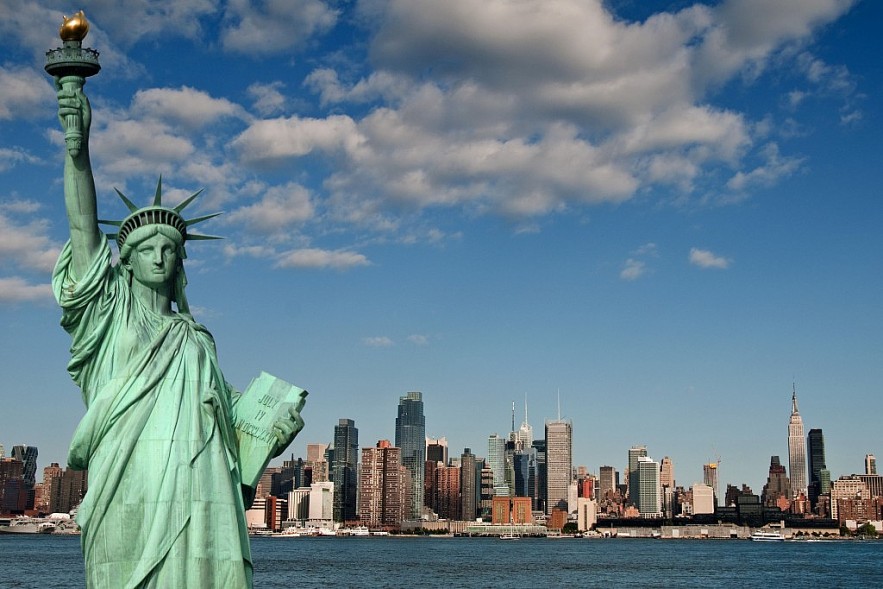 |
| New York - Richest City In the World |
GDP: $1,210 billion
Area: 1,213square kilometers
Population: 8,244,910
The second place goes to the well-known New York City, whose diverse economy includes the arts, finance, medicine, fashion, media, and more. The city has a population of about 8.6 million, and the average yearly wage is more than $60,000. New York continues to be an attraction for people all over the world because it is dynamic, vibrant, and brimming with opportunities.
New York City. The Never Sleeping City. According to the old Frank Sinatra song, "If you can make it in New York, you can make it anywhere."
One of the most historically significant cities in the country, especially on the East Coast, is New York. It played a role in the Anglo-Dutch War, which the Dutch won but ultimately lost to the English after a treaty was signed in 1647.
One of the cities that advocated for the abolition of slavery in the United States was New York, which also served as a port of entry for immigrants from Europe, resulting in the city's current cultural diversity. Times Square, the Statue of Liberty, the Brooklyn Bridge, and the Empire State Building are a few of the city's attractions.
Key Facts:
New York’s economy is multifaceted, encompassing various industries.
The city boasts an average salary of over $60,000 annually.
3. Los Angeles, USA
 |
| Los Angeles - Richest City In the World |
GDP: $789.7 billion
Area: 1,302 square kilometers
Population: 3,792,621
The "City of Angels," also known as Los Angeles, is the third richest city in the world. With a population of just over 4 million, its budget is funded by various industries, including tourism, healthcare, IT, science, finance, entertainment, and music. Los Angeles continues to have an impact on world trends as the center of American pop culture.
The village, which was primarily made up of people of Spanish descent when it was first settled, grew into a sizable town when Americans took control of it in 1847. More people moved to the area as a result of the railroad construction, which also aided in the development of the local economy until the city became what it is today. Although many see Los Angeles as the center of American film and show business, the majority of the city's businesses are in the banking and finance industries.
Key Facts:
Los Angeles is a major hub for the entertainment industry.
The city plays a pivotal role in shaping global pop culture.
4. Seoul, Republic of Korea
GDP: $779.3 billion
Seoul, the vivacious capital of the Republic of Korea, is a hub for science, politics, business, and culture. Seoul is a bustling metropolis with a population of between 10.6 and 10.9 million, including about 360,000 foreigners. Tens of thousands of specialists are employed by the city's headquarters of multinational behemoths like Kia, Hyundai, Samsung, and LG Electronics.
According to history, Seoul was established as early as 17 BC and is one of the oldest still-existing settlements in the East Asian region. Seoul suffered greatly from attacks from Japan, China, and Korea during the Korean War, which lasted from 1950 to 1955. Seoul began to grow as a city when a formal truce between the two Koreas was established, and it has continued to do so ever since. Today, visitors from all over the world pour into Seoul, stopping at notable locations like the N Seoul Tower, Namsan Park, Changdeokgung Palace, and the Korean War Memorial.
Key Facts:
Seoul is a major hub for global corporations and technological innovation.
The city’s economy is bolstered by giants like Samsung and Hyundai.
5. London, England
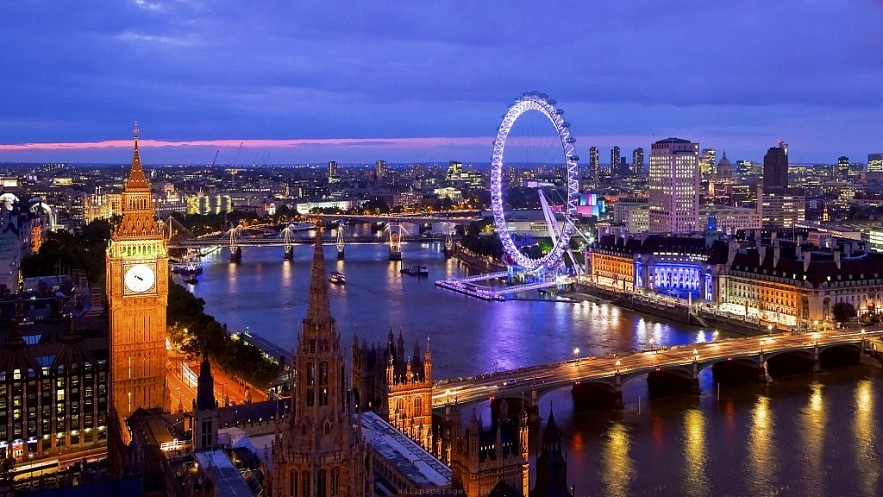 |
| London - Richest City In The World |
GDP: $731.2 billion
Area: 1,570 square kilometers
Population: 8,173,194
One of the most visited cities in the world is London, which has a long history and cosmopolitan appeal. Over 19 million tourists visit the British capital each year. With a population of about 9.2 million, London is the biggest city in Europe and a major hub for trade, finance, and global commerce. Thousands of people seeking employment are drawn there by its allure.
Even after the Roman Empire was defeated, London, originally known as Londinium, quickly expanded to become a sizable city. Throughout history, London has endured a lot of hardship. The Great Fire occurred in 1666, and a century later, the Black Plague struck. The two World Wars saw London play a significant role as well. Many people of various races, cultures, and religions dreamed of visiting the city, making London an important global melting pot. The Buckingham Palace, Tower Bridge, London Eye, and the renowned Big Ben clock tower are tourist attractions that are worthwhile to visit while in London. The city's economy is based largely on banking and finance.
Key Facts:
London is a major global tourist destination and business hub.
The city’s economy is perse, with strengths in finance, trade, and culture.
6. Paris, France
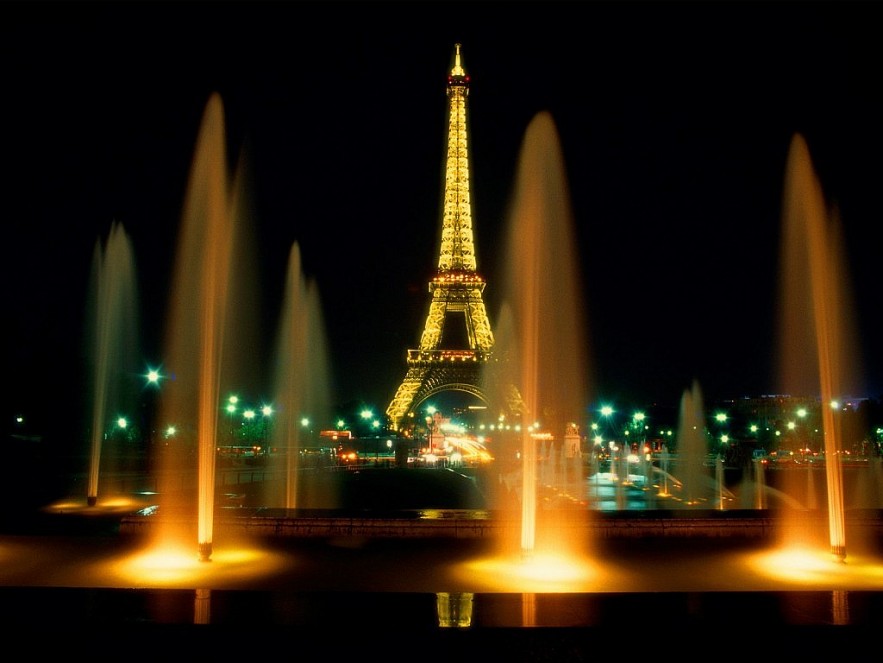 |
| Paris - Richest City in the World |
GDP: $669.2 billion
Area: 105.4 square kilometers
Population: 10,413,386
Paris, also known as "The City of Love," is well known for its significant financial prowess in addition to its romantic allure. Paris is regarded as one of the most beautiful cities in the world, and the tourism sector has a significant impact on the city's economy, accounting for almost 25% of France's GDP. Paris, which has a population of about 2.2 million, continues to be a cultural, artistic, and fashion mecca.
Paris has had a turbulent history. Numerous conflicts occurred during the rise and fall of the Roman Empire, as well as conflicts during the Middle Ages, the Black Plague, Asian invasions, and two World Wars. Aside from still being known as the City of Love, Paris is now also known as the Fashion Capital of the World, with upscale clothing stores lining the streets and an influx of models and fashion designers looking to break into the industry. The well-known Eiffel Tower, the Champs Elysees, the Louvre Museum, and the Arc de Triomphe are all noteworthy locations.
The tourism sector contributes significantly to the economy of Paris.The city is a hub for fine dining, fashion, and the arts on a global scale.
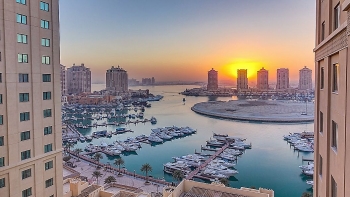 Top 10 Richest Countries in the World 2023 by Net Worth Top 10 Richest Countries in the World 2023 by Net Worth Find out the complete list of 10 Richest Countries in the World by Net Worth in 2023: China has surpassed the United States as the ... |
7. Osaka, Japan
GDP: $654.8 billion
Area: 552.26 square kilometers
Population: 1,545,410
One of Japan's oldest cities, Osaka, is ranked seventh among the richest cities in the world. Osaka's economic power is undeniable; it serves as the industrial, transport, communication, shipping, and commercial center of western Japan. With a population of over 2.6 million, the city's historical importance and current economic vitality coexist harmoniously.
Osaka is one of Japan's oldest and most historically significant cities, with roots dating back to 6 BC. However, Osaka's true emergence as a city flourished from 1603 to 1867, during the Edo Period. Only 223 square kilometers of its overall land area are considered to be urbanized today. The remaining land is categorized as either agricultural or cultural. The Osaka Castle and Universal Studios Japan are two popular tourist destinations. The majority of the city's industries produce metal, textiles, and plastic.
A significant industrial and commercial center in western Japan is Osaka.The city's vibrant present-day economy is complemented by its rich historical past.
8. Chicago, USA
GDP: $524.6 billion
Area: 606.1 square kilometers
Population: 2,707,120
Third in this list of American metropolitan areas is the "Windy City," Chicago. Chicago's economy is a mashup of industries, from food processing and insurance to transportation, financial, and trade services, with a population of about 2.7 million. Along with more than 1,800 foreign businesses, the city is home to significant American businesses like United Airlines, Boeing, and Sears.
Chicago is a globally significant economic hub with strengths across many sectors. The city serves as a significant hub for both domestic and foreign commerce.
9. Moscow, Russia
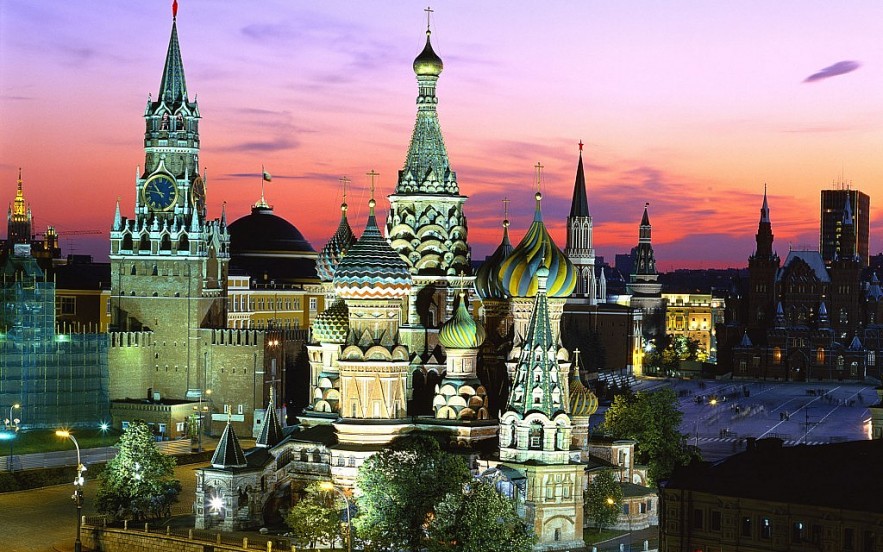 |
| Moscow |
GDP: $520.1 billion
Area: 2,510 square kilometers
Population: 11,503,501
Russia's sprawling capital, Moscow, is a symbol of the power of its economy. With a population of over 12 million, Moscow is not only the largest city in Europe (aside from Istanbul), but it is also Russia's main center for science, education, culture, business, and finance. Large Russian corporations are drawn to the city, which is frequently listed as one of the most expensive in the world.
Russia's economic, cultural, and political activities are centered in Moscow.Many of Russia's wealthiest people and companies are based in this city.
10. Shanghai, China
GDP: $516.5 billion
Area: 6,340.5 square kilometers
Population: 23,019,148
Our list of the wealthiest cities is completed by Shanghai, China's financial capital. Shanghai, one of the most populous cities in the world with a population of over 24 million, is also a major transportation hub and home to the busiest container port in the entire world. Up to 800 financial institutions can be found in the city, and 170 of them have foreign investments, demonstrating its influence on the world economy.
Shanghai is recognized as China's commercial hub and will continue to be so for many years to come, despite Beijing serving as the country's cultural and political capital. Shanghai's reputation and allure are greatly enhanced by the fact that the majority of its major industries are in the tourism, chemical, and steel production sectors, and that the majority of foreign embassies have chosen Shanghai as their home city. Shanghai was formerly a small fishing village on the Chinese east coast.
Shanghai is an important financial and transportation hub for both China and the rest of the world. The port of the city is also important for international trade, which increases the city's economic importance.
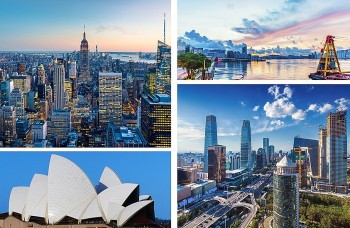 Top 16 Richest Cities With Over 100,000 Resident Millionaires Top 16 Richest Cities With Over 100,000 Resident Millionaires Which city is the richest in the world and has the most millionaires living in it in 2023? |
Top 10 Poorest Cities in the World 2023/2024
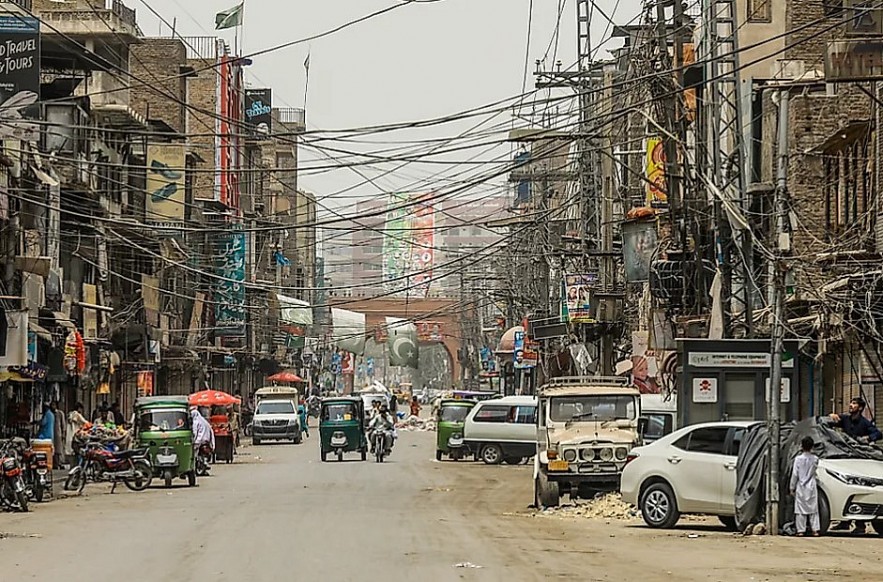 |
| Poorest city in the world |
The world is full of incredibly prosperous urban centers. Tokyo, New York, Los Angeles, and Seoul are some of the world's most prosperous megacities. But what about those slums in the big cities? Could they be real? Is the standard of living particularly low in any cities? The world has more than enough poor cities, so the answer is yes to both questions.
Overcrowding, bad sanitation, high unemployment, outdated infrastructure, and high crime rates are common in the world's poorest cities. There will be some wealthy people even in the world's poorest cities, but the vast majority of the population will be living in poverty. War, natural disasters, disease, illiteracy, widespread corruption, and other causes have left some of these cities in dire poverty.
The world's poorest countries are also home to the world's poorest cities, and this information is collected only at the regional/local level to better reflect actual conditions. It's interesting to note that none of these cities are completely devoid of life; rather, their economies have failed to fully capitalize on the opportunities they've always had.
Check more: Top 10 Poorest Countries in the World by GDP Per Capita
1. Monrovia, Liberia
Population: Over 1 million
Liberia's capital city of Monrovia is located on the coast of West Africa. More than 20% of Liberia's population lives in the capital city of Monrovia. Human development, infrastructure, and security may all be lacking in Monrovia, but when weighed against the incredible destruction caused by a decade-long war in which land mines and child soldiers were used, the city has reason to celebrate.
The Free-port of Monrovia, as well as the numerous government agencies, contribute significantly to the city's economy. Refining petroleum, making cement, and producing chemicals are all vital economic activities. Most people, however, do not benefit from this system and must instead rely on the informal economy to provide for themselves by, for example, running makeshift shops and stalls, performing unofficial cleaning work, or operating makeshift transportation services. Many residents of Monrovia are uneducated and stuck in slums without access to running water or electricity.
2. Conakry, Guinea
Population: About 1.7 million
One of the poorest cities in the world is located in Guinea, and its name is Conakry. The city has a population of around 1.7 million people and is found on the West Coast of Africa. The cultural diversity in Conakry is not surprising given Guinea's cultural wealth. More than a sixth of Guinea's people live in the city of Conakry, making it much more than just the nation's capital. This is where the majority of the country's government and cultural institutions are located.
The city of Conakry benefits economically from having a port that can safely store and ship perishable agricultural exports like bananas, pineapples, citrus, and other food items. Cement, metals, and fuel products are also major exports. While accurate statistics for Africa as a whole are elusive, the United Nations has revealed that between 60 and 70 percent of all trips made in Guinea Conakry are made on foot due to the country's dismal infrastructure. It has been suggested that inefficient modes of transportation are to blame for the country's slow economic growth.
3. Gitega, Burundi
Population: 135,467
Burundi's government is headquartered in Gitega. The city is the administrative capital of the country and is home to 135,467 people. Burundi's new capital, Gitega, has yet to surpass Bujumbura as the country's commercial hub and most populous city. Nonetheless, the city has great potential due to its location on a broad plateau close to where the Ruvyironza and Rurubu Rivers meet. Gitega is conveniently located near the country's largest national park, Ruvubu.
Government institutions in Gigeta contribute to the city's thriving economy. Ruvubu National Park is a popular tourist destination and contributes significantly to the country's annual GDP. Gitega and the country as a whole rely heavily on the services of the informal economy, which includes things like street trading, transportation, and cleaning. Due to the poor state of the economy, the airport had to close. Since most people in Gitega are subsistence farmers, there is a lot of opportunity in the food processing industry. The idea that goat herding can help lift many people out of poverty has led to its widespread promotion. In a few years, Burundi will be able to supply much of the continent's meat, boosting the economy in Gitega.
4. Mogadishu, Somalia
Population: About 2.4 million
Mogadishu is more commonly known as Xamar among locals. Located on the tip of the African continent, the city serves as the capital of Somalia. About 2.4 million people call Mogadishu home. This city dates back to the 1st century and played a major role in the rise of the Roman Empire. Mogadishu has not progressed very far because of internal strife, radicalization, and a lack of focused leadership.
Mogadishu's prosperity has long been tied to its status as a port city, which has allowed it to serve as a major hub for regional trade. However, the United Nations now recognizes Somalia as one of the world's least developed countries, and most of the population lives off of subsistence farming. A devastating civil war slowed the country's economy and diminished its influence.
Agriculture in Somalia has great potential; the city of Mogadishu and the country as a whole stand to benefit greatly from the adoption of modern methods of animal production.
5. Bangui, Central African Republic (CAR)
Population: 889,231
The government of the Central African Republic is headquartered in Bangui. It was founded in 1889 as a French colonial outpost on the banks of the Ubangi River, after which it is named. There are currently 889,231 people living in Bangui.
Bangui is one of the world's poorest cities, and the presence of the national government has not been enough to improve the situation. Most people in CAR rely solely on subsistence agriculture, which receives no support from the government. The infrastructure required to transport, process, and store the farm produce is sometimes lacking, and there is not enough organized large-scale farming.
6. Kinshasa, Congo
Population: About 17 million
Kinshasa, the largest city in Congo DR and Africa, has a storied history.
Despite its size and potential, the majority of Kinshasa’s population survives on roughly $1 per day. However, there are signs of growth in manufacturing, banking, and the service industry.
Years of stagnation and decline have left the city grappling with economic hardships.
7. Juba, South Sudan
Juba, the capital of South Sudan, is a city with immense potential but faces challenges due to its reliance on oil.
The city’s economy is heavily dependent on oil. However, revenue sharing with Sudan, through which most pipelines pass, has posed challenges.
Political instability and conflicts have affected economic growth and development.
8. Niamey, Niger Republic
Population: 1,026,848
Niamey, the largest city in the Niger Republic, is situated in an arid region.
The city’s economy revolves around agriculture and small-scale manufacturing, including ceramics and cement.
The arid climate and lack of investment have limited the city’s growth potential.
9. Bamako, Mali
Bamako, Mali, is a major West African city on the Niger River.
Even though Bamako is Mali's economic hub, most of the city's residents still make their living through more traditional means like farming, trading, and handicrafts.
Lack of modern infrastructure and a reliance on the informal economy have hampered development.
10. Dar Es Salaam, Tanzania
Population: About 6 million
Dar es Salaam is one of the world's poorest cities, but with new infrastructure, it has great potential. This is the most populous city in East Africa and one of the most populous cities in all of Africa, with a population of around 6 million.
The locals have a lot of charm and friendliness. Seventy percent of this city consists of slums and makeshift neighborhoods.
The fastest growing cities for the super-wealthyThe ten years from 2012 to 2022 saw particularly rapid wealth growth in the following significant cities: Monaco: Possibly the best haven in the world for the super-rich. Monaco is the wealthiest city in the world when measured by GDP per capita, with an average household wealth of over USD 10 million. In addition, it is the most expensive city in the world, with average apartment prices exceeding USD 35,000 per square meter. Warsaw: The financial and economic hub of Poland. Fast-growing sectors in the city include financial services, real estate, and tech. Dublin: Home to the European headquarters of many of the world’s largest tech companies, Dublin has seen especially strong wealth growth over the past 20 years. Scottsdale: Scottsdale, the crown jewel of the Greater Phoenix Metro, is home to an increasing number of opulent golf and lifestyle estates and is drawing a sizable population of tech entrepreneurs from California as well as affluent retirees. Austin: It is known as "Silicon Hills" because of its rapidly expanding tech industry. Over the past few years, a number of significant tech companies have relocated their corporate headquarters to Austin, most notably Tesla and Oracle. The city's luxury housing market has also been expanding quickly. West Palm Beach: an increasingly well-liked destination for retirement for millionaires from East Coast cities like Boston, New York City, and Philadelphia. After COVID, a lot of wealthy people, particularly those in the fund management industry, are choosing to work remotely. Greenwich & Darien: Fund managers, investment bankers, and wealthy financiers are increasingly choosing to live in these nearby towns on Connecticut's Gold Coast. Both are family-friendly towns with good schools and sizable residential areas that are comparatively safe. Additionally, taxes there are much lower than in the nearby New York City. Dubai: Its safe haven status and low tax rates make it a magnet for migrating millionaires from the world over. Approximately 3,500 high-net-worth individuals moved to the city in 2022 alone. Marrakech: An increasingly popular retirement hotspot for Moroccan and European high-net-worth individuals. Marrakech is also home to flourishing luxury real estate and hotel sectors. Kigali: The economic center of Rwanda and a burgeoning tech and financial hub. Notably, Rwanda was Africa’s fastest growing market over the past decade, both in terms of millionaire growth and overall wealth growth. Shenzhen: The hi-tech capital of China and home to the Shenzhen Stock Exchange — the sixth-largest stock market in the world by market cap. Several global tech giants are based in the city, including Huawei, Tencent, and ZTE. Bengaluru: Also known as the “Garden City” and the “Silicon Valley of India”, Bengaluru has a booming tech sector. Hangzhou: Hangzhou is renowned for its architecture and gardens and is thought to be one of China's more picturesque cities. Due to this, wealthy people choose to retire and live in the city. There are offices for Ant Group, NetEase, and media and retail company Alibaba. Ho Chi Minh City: This city, formerly known as Saigon, is quickly becoming Asia's next major millionaire hotspot. Financial services, textiles, technology, electronics, telecoms, chemicals, and tourism are a few industries that are rapidly expanding. |
Conclusion
The world is changing, and the disparity between the rich and the poor is widening. Some urban areas are known for their lavishness and opulence. Meanwhile, many other urban areas are also experiencing severe poverty.
You now know which cities are the poorest and which are the richest in terms of GDP. However, the disparity between the world's richest and poorest and the injustices that exist on this one planet cannot be captured by GDP alone.
Cities are examples of human progress, potential, and challenges in the grand tapestry of our planet's landscape. Some cities shine with prosperity, while others suffer from economic inequality. But no matter where you go in the world, you’ll find an example of human perseverance, optimism, and strength. It is important to keep in mind, as we navigate the complexities of our global economy, that every city, no matter how wealthy or impoverished, has value and potential that has yet to be realized.
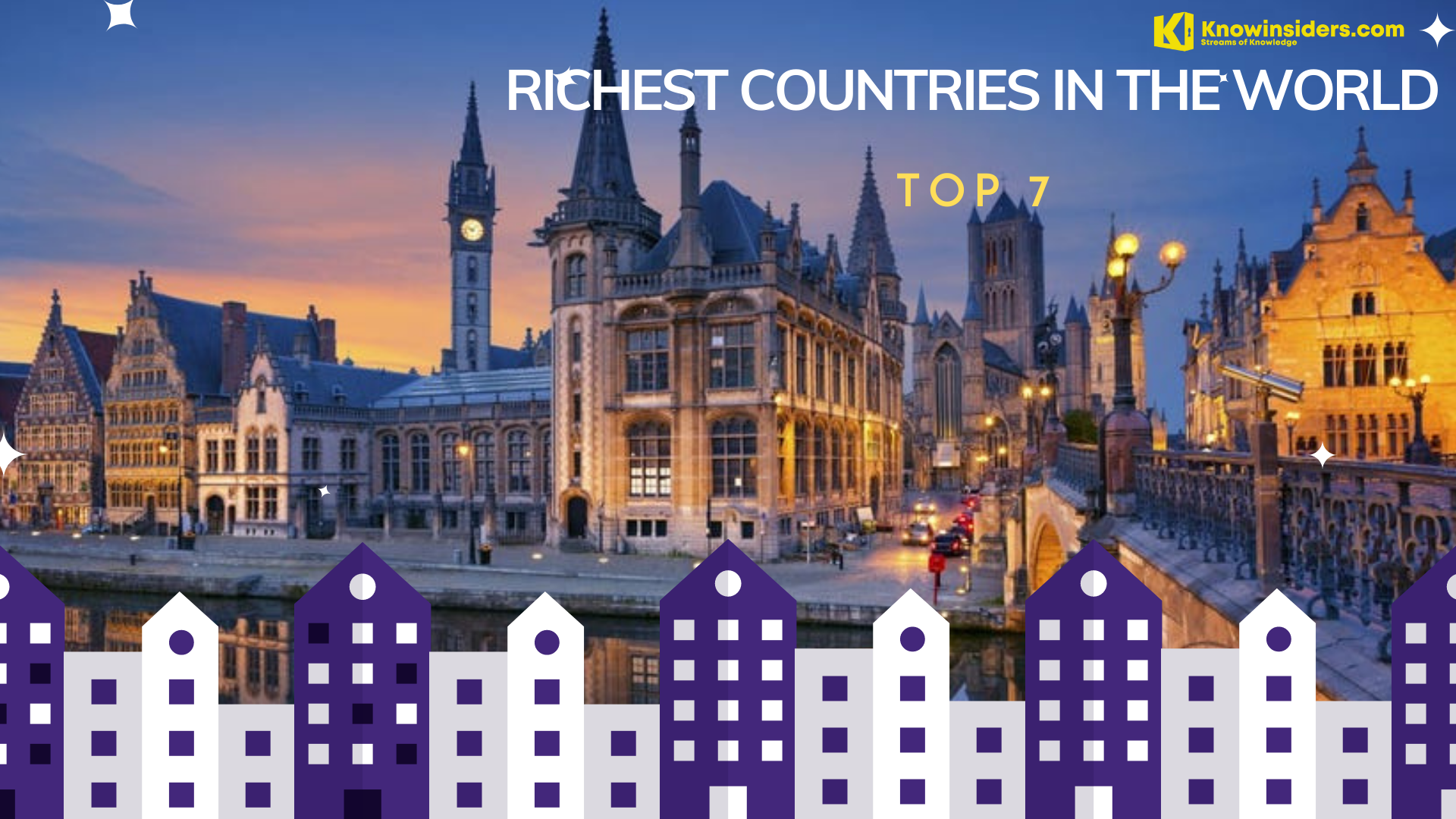 7 Richest Countries In The World by GDP Per Capita 7 Richest Countries In The World by GDP Per Capita The top economies in the world can be ranked by many different metrics. Currently, Luxembourg, one of the smallest sovereign states in Europe, ranks first ... |
 Top 10 Richest Countries in the World 2023 by Net Worth Top 10 Richest Countries in the World 2023 by Net Worth Find out the complete list of 10 Richest Countries in the World by Net Worth in 2023: China has surpassed the United States as the ... |
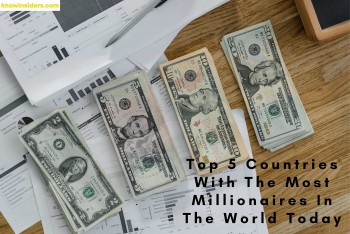 Top 5 Countries With The Most Millionaires In The World Today Top 5 Countries With The Most Millionaires In The World Today Do you know that more than a third of the millionaires live in the US, which is home to 24.5 million millionaires, or 39% of ... |
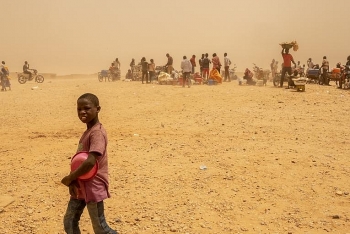 7 Poorest Countries in the World By GNI and HDI 7 Poorest Countries in the World By GNI and HDI The poorest countries in the world might not be as obvious as you may have assumed. We offer the 7 poorest countries, where are fighting ... |




